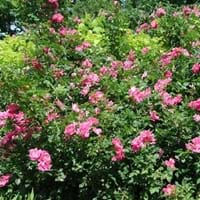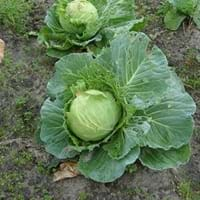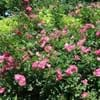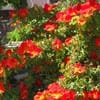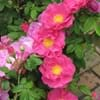Life Span
Perennial
Annual
Origin
Europe, Northern America, Northern Europe
Europe, Mediterranean, Canary Islands, Northern Africa
Types
Not Available
Not Available
Habitat
shores, Shores of rivers or lakes
Not Available
USDA Hardiness Zone
9-10
Not Available
Sunset Zone
7, 8, 9, 12, 13, 14, 15, 16, 17, 18, 19, 20, 21, 22, 23, 24
A1, A2, A3, H1, H2, 1a, 1b, 2a, 2b, 3a, 3b, 4, 5, 6, 7, 8, 9, 10, 11, 12, 13, 14, 15, 16, 17, 18, 19, 20, 21, 22, 23, 24
Habit
Spreading
Rosette/Stemless
Flower Color
Baby Pink, Not Available, Pink, Red
Yellow
Flower Color Modifier
Not Available
Bicolor
Fruit Color
Not Available
Brown
Leaf Color in Spring
Green
Not Available
Leaf Color in Summer
Green
Green, Gray Green, Dark Green
Leaf Color in Fall
Green
Green, Gray Green
Leaf Color in Winter
Green
Green, Gray Green
Leaf Shape
Elliptic
Spinach Type
Plant Season
Spring, Summer
Spring, Fall, Winter
Sunlight
Full Sun, Partial Sun
Full Sun, Partial Sun
Type of Soil
Clay, Loam, Sand
Loam, Sand
The pH of Soil
Acidic, Neutral
Neutral, Alkaline
Soil Drainage
Well drained
Well drained
Bloom Time
Early Spring, Spring, Late Spring
Spring, Late Spring, Early Summer
Tolerances
Drought
Drought
Where to Plant?
Container, Ground, Pot
Container, Ground, Pot
How to Plant?
Seedlings
Seedlings
Plant Maintenance
Medium
Medium
Watering Requirements
occasional watering once established
Do Not over Water
In Summer
Lots of watering
Lots of watering
In Spring
Moderate
Moderate
In Winter
Average Water
Average Water
Soil pH
Acidic, Neutral
Neutral, Alkaline
Soil Type
Clay, Loam, Sand
Loam, Sand
Soil Drainage Capacity
Well drained
Well drained
Sun Exposure
Full Sun, Partial Sun
Full Sun, Partial Sun
Pruning
Remove damaged leaves, Remove dead branches, Remove dead leaves
No need to prune, Remove damaged leaves, Remove dead branches, Remove dead leaves
Fertilizers
Doesn't require fertilization when grown in rich soil
Nitrate based fertilizers
Pests and Diseases
Botrytis Blight, Powdery mildew, Sooty Mold, Verticillium Wilt
Alternaria Leaf Spot, Anthracnose, Aphids, Beet armyworm, Black rot, Cabbage looper, Cercospora leaf spot, Clubroot, Cutworms, Damping-off, Diamondback moth, Downy mildew, Flea Beetles, Leaf spot, Red blotch, Root knot nematode, Thripes
Plant Tolerance
Drought
Drought
Flower Petal Number
Single
Single
Fragrant Bark/Stem
Yes
No
Foliage Texture
Medium
Bold
Foliage Sheen
Matte
Matte
Attracts
Hummingbirds, Butterflies
Bugs
Allergy
no allergic reactions
Not Available
Aesthetic Uses
Showy Purposes
Not Used For Aesthetic Purpose
Beauty Benefits
Perfumes
Not Available
Environmental Uses
Air purification
soil erosion prevension on hill slopes
Medicinal Uses
No Medicinal Use
anti-cancer, Heart problems
Part of Plant Used
Whole plant
Leaves
Other Uses
Oil is used for aromatherapy, Used as Ornamental plant
Used as a vegetable
Used As Indoor Plant
No
No
Used As Outdoor Plant
Yes
Yes
Garden Design
Foundation, Mixed Border
Container, Edible, Herb / Vegetable
Botanical Name
Rosa rugosa
BRASSICA oleracea
Common Name
Ramanas Rose, Japanese Rose, Rugosa Rose
Carolina Cabbage Collard Greens, Collard Greens
In Hindi
Japanese Rose
collard साग
In German
Japanese Rose
Blattkohl
In French
Japanese Rose
Chou cavalier
In Spanish
Japanese Rose
Brassica oleracea viridis
In Greek
Γιαπωνέζικο Τριαντάφυλλο
λάχανο
In Portuguese
Japanese Rose
greens kollard
In Polish
Japanese Rose
kollard zieleni
In Latin
Japanese Rose
vireta kollard
Phylum
Not Available
Magnoliophyta
Class
Not Available
Magnoliopsida
Order
Malvales
Brassicales
Family
Cistaceae
Brassicaceae
Clade
Angiosperms, Eudicots, Rosids
Not Available
Tribe
Not Available
Brassiceae
Subfamily
Not Available
Not Available
Importance of Japanese Rose and Collard Greens
Want to have the most appropriate plant for your garden? You might want to know the importance of Japanese Rose and Collard Greens. Basically, these two plants vary in many aspects. Compare Japanese Rose and Collard Greens as they differ in many characteristics such as their life, care, benefits, facts, etc. Every gardener must at least have the slightest clue about the plants he wants to plant in his garden. Compare their benefits, which differ in many ways like facts and uses. The medicinal use of Japanese Rose is No Medicinal Use whereas of Collard Greens is anti-cancer and Heart problems. Japanese Rose has beauty benefits as follows: Perfumes while Collard Greens has beauty benefits as follows: Perfumes.
Compare Facts of Japanese Rose vs Collard Greens
How to choose the best garden plant for your garden depending upon its facts? Here garden plant comparison will help you to solve this query. Compare the facts of Japanese Rose vs Collard Greens and know which one to choose. As garden plants have benefits and other uses, allergy is also a major drawback of plants for some people. Allergic reactions of Japanese Rose are no allergic reactions whereas of Collard Greens have Not Available respectively. Having a fruit bearing plant in your garden can be a plus point of your garden. Japanese Rose has no showy fruits and Collard Greens has no showy fruits. Also Japanese Rose is not flowering and Collard Greens is not flowering . You can compare Japanese Rose and Collard Greens facts and facts of other plants too.
